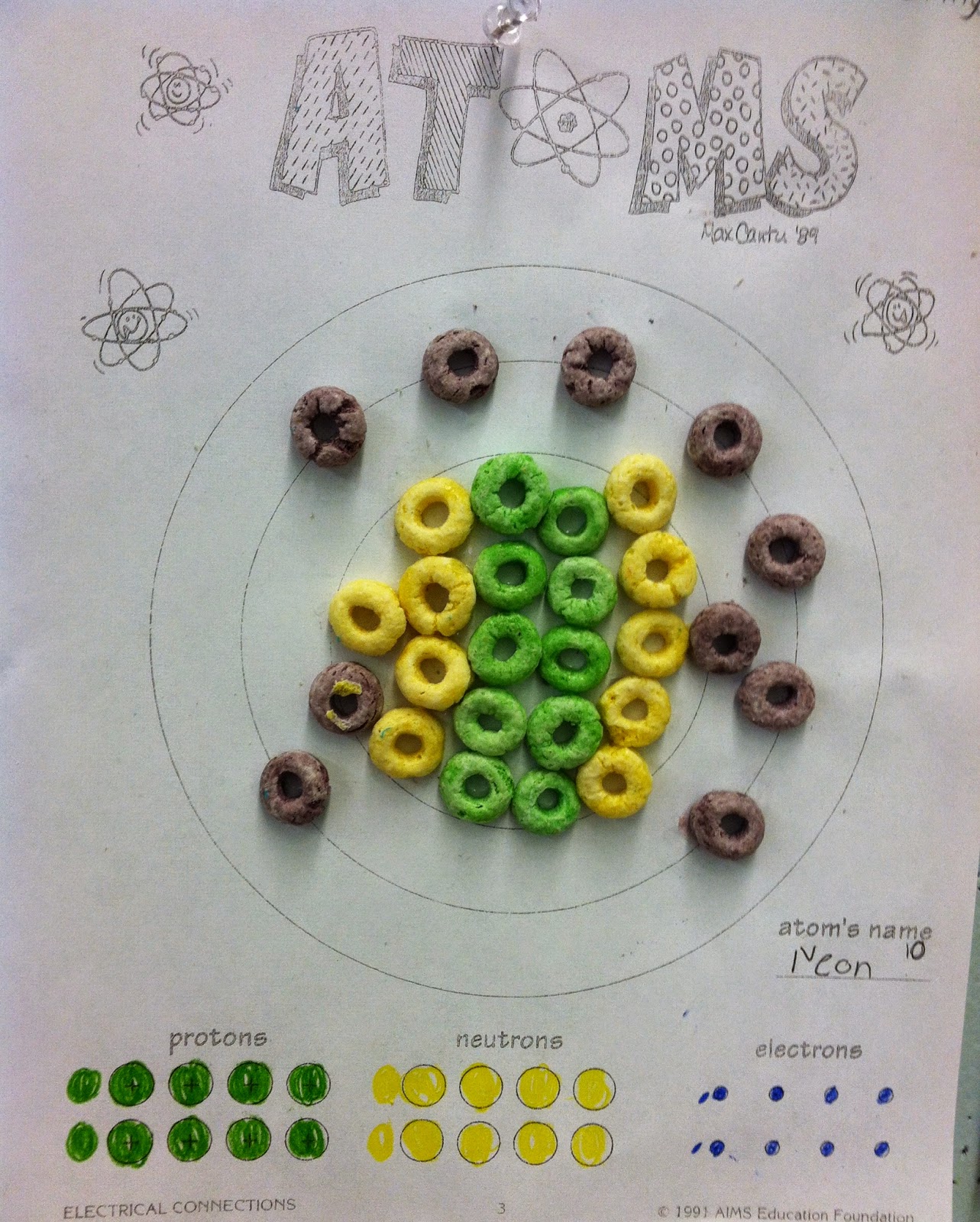 |
| How to make a model of an atom using Froot Loops... |
Here is how to make atom models using Froot Loops, or a generic version of that type of cereal. Start with a Periodic Table. I like this one because it shows a graphic of each atom, including how many electrons are on each shell/in each energy level.
Understanding a little bit about atoms is essential to understanding electricity, so here are some atom basics: An atom is made of protons, neutrons, and electrons. Protons have a positive charge, electrons have a negative charge, and neutrons have no charge. An atom's nucleus is made of protons and neutrons. An atom's electrons are outside the nucleus on shells (they do not orbit the nucleus; to understand how electrons are attached to the atom, read this). Each shell can only have a fixed number of electrons. The first shell can have a maximum of 2 electrons. The second shell can have a maximum of 8 electrons. The third shell can have a maximum of 8 electrons.
I don't go further than that with students in elementary through middle school.
Last week, my fourth grade students each made three atom models: hydrogen, helium, and carbon.
Hydrogen (Atomic Number 1) has one proton and one electron. It has no neutrons. (Note that each model has a key to show which color Froot Loop represents which particle.)
Helium (Atomic Number 2) has 2 protons, 2 neutrons, and 2 electrons. This model shows that a nucleus has protons and neutrons.
Carbon (Atomic Number 6) has 6 protons, 6 neutrons, and 6 electrons. We
made this model to demonstrate that each shell can only have a fixed
number of electrons.
.JPG) |
| This student glued all his protons together and all his neutrons together. |
Tomorrow, I'm going to let students make the atom model of their choice. I limit them to atoms with fewer than 4 shells, so they can choose any atom from Atomic Number 3 to Atomic Number 18 (from Lithium to Argon).
Lastly, you don't need the above sheet to make these models. Children can just use a marker to draw their shells on a piece of blank paper.
The Periodic Table image above is from Wikimedia Commons and is by DePiep.

.svg.png)
.JPG)
.JPG)
No comments:
Post a Comment